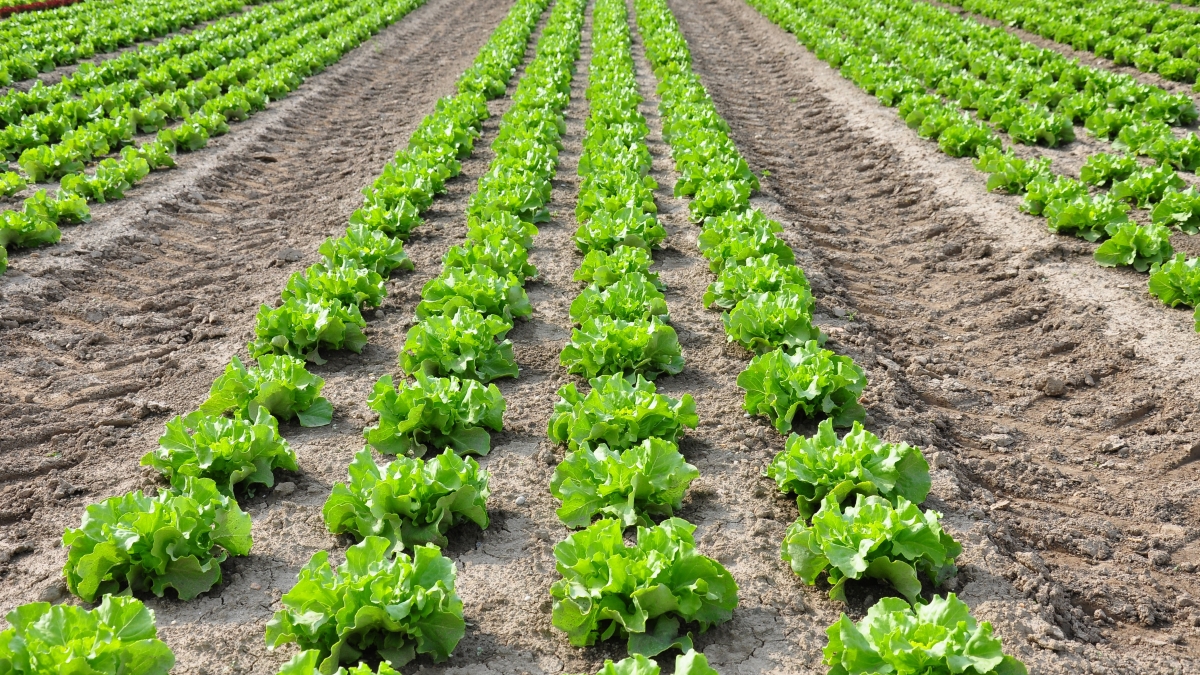ASU study shows effect of climate change on food, energy and water across Southwest

With the world waiting for President Donald Trump’s executive order on climate change, an Arizona State University study on Arizona agriculture shows the potential effect of a warming planet on the state and the region by examining the food-energy-water nexus.
Disruptions from temperature increases could drop crop yields, require more irrigation and cause ripples, including increased food prices, throughout the Southwest, according to the paper from Andrew Berardy and Mikhail Chester of the Julie Ann Wrigley Global Institute of Sustainability at ASU.
“One of the main things to take away from this is there’s a connection between energy and water in agriculture, and that connection is vulnerable to climate change,” said Berardy, who focuses on sustainable food systems.
“As temperatures increase,” he said, “as there’s more variability in rainfall, and less rainfall overall, these things are going to have cascading impacts, not only impacting farms and agriculture and our food system in general, but the energy and water systems that supply the necessities to grow food.”
Trump’s upcoming order could include changes to power-plant emissions standards that he has said are excessive. Opponents worry that without such protections in place, the U.S. would not reduce its carbon footprint.
For major Arizona crops, according to Berardy and Chester’s research, yields could drop more than 12 percent per 1 degree Celsius. It also could require increased irrigation of about 2 percent per degree, according to the study.
Disruptions would be felt locally and across the Southwest, including California, Nevada and Texas, affecting food supply chains to several major U.S. cities, the research shows.
Tucson gets all of its live animals and fish from within the state. It also gets the overwhelming majority of its “other agricultural products” and foodstuffs from Arizona. Phoenix, meanwhile, gets nearly 90 percent of “other agricultural products,” nearly three-quarters of its animal feed, and more than half of its cereal grains, foodstuffs and live animals from within the state.
Los Angeles receives nearly a quarter of its live animals from Arizona.
San Diego gets 14 percent of its animal feed from the Grand Canyon State.
El Paso takes 25 percent of foods other than animal products, feed and milled grains from Arizona.
But more than anything else, Arizona ships food — mostly lettuce — to states as far-flung as Washington state and Massachusetts.
Shocks and strains on energy and water production and their delivery systems could result in failures that cascade down to food systems. Failures in one system could easily spread to another.
“That’s one of the things we wanted to capture: what the actual consequences of any reduction in Arizona agriculture would be,” Berardy said.
Berardy and Chester analyzed public data that show different modes of freight and what types of goods are going across state lines. They also studied the threshold temperatures of crops, U.S. Department of Agriculture and U.S. Geological Survey data, Arizona crop budgets and region-specific literature.
“We definitely were surprised at how much California and Texas and some other states depend on Arizona’s agricultural output,” Berardy said.
It’s going to be more complicated than just the price of food skyrocketing. Land used for fodder production, like alfalfa, might be shifted to other crops.
“The shifts are going to be felt first in livestock, in the price of meat and dairy, because the effect of the temperature increase will be felt there first,” Berardy said. “If these impacts are happening in Arizona, they’re going to be found in other states, too. That will have a compounding effect.”
Other studies have looked at one crop, or the effect of temperature increase on its own. This study came from a holistic approach to get a more realistic look at what might happen.
The paper recommended farmers switch to more efficient irrigation methods, like drip irrigation.
Smaller farms might not be able to afford a switch to drip irrigation. Larger farms might already have a pricey sprinkler system in place they don’t want to replace. Only about half of Arizona farms with flood-irrigation systems engage in any kind of water conservation, according to the study.
“You can change any one component of it, and it has cascading effects downstream,” Berardy said. “No matter what you change, it’s going to change something else too.”
To read the study, please visit this link: http://iopscience.iop.org/article/10.1088/1748-9326/aa5e6d
Top photo: Arizona ships food — mostly lettuce — to states as far flung as Washington state and Massachusetts. ASU Now file photo.
More Environment and sustainability

From K–12 to corporate upskilling, ASU guides learners of all ages to design a sustainable future
Editor’s note: This story is part of a series exploring how ASU tackles complex problems to create a thriving future.When Kennedy Gourdine was a high school student in Maryland, she conducted…

Sustainability leadership in action
Editor's note: This story was originally featured in a special edition of ASU Thrive magazine.ASU alumni are making an impact. From city government to corporate leadership, they’re working in every…

Sustainable plant-based polymers could replace endocrine-disrupting plastics
We humans produce enormous volumes of plastic waste, and we recycle very little — just 14% of the 590 billion pounds discarded in one recent year, worldwide. To make matters worse, exposure to…

